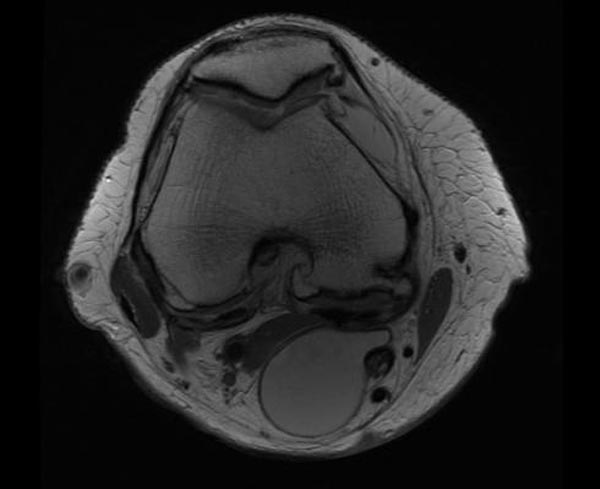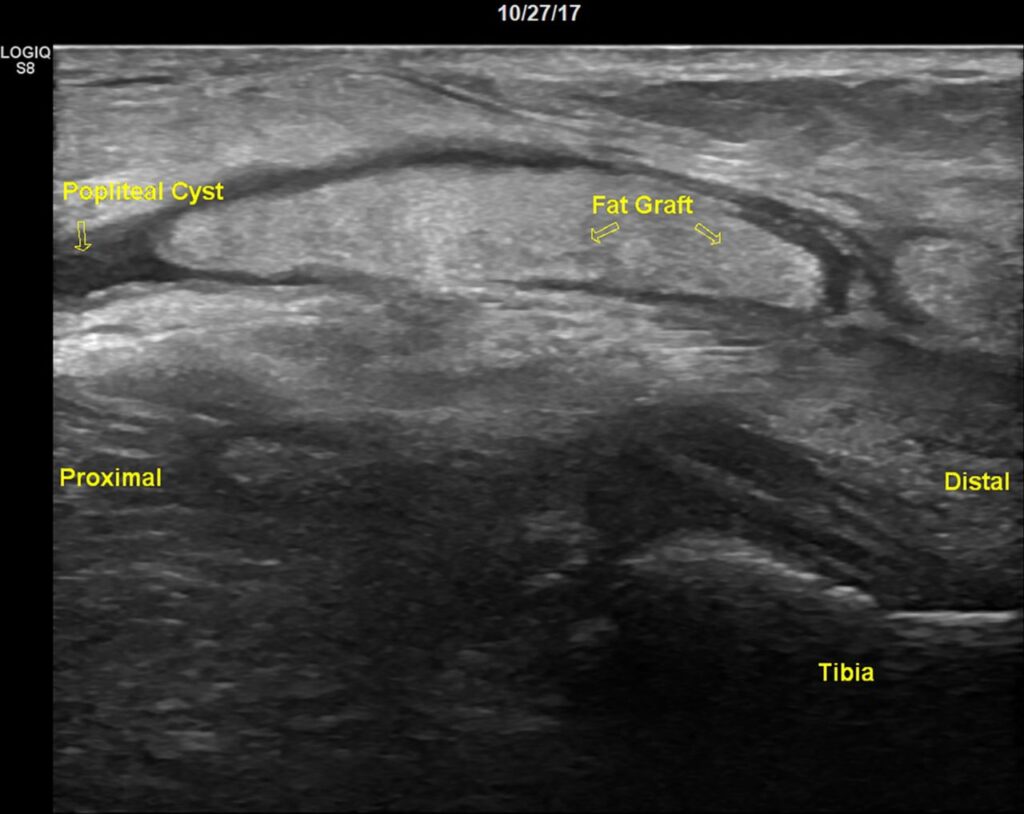A Baker’s Cyst, also known as a Popliteal Cyst, is a fluid-filled swelling that develops at the back of the knee. This condition often causes discomfort and may limit mobility in some individuals. While it is not life-threatening, understanding its causes, symptoms, and treatment options can help manage the condition effectively.

What Is a Baker’s Cyst?
A Baker’s Cyst occurs when excess joint fluid accumulates in the space behind the knee. This fluid buildup forms a cyst, which can vary in size and severity. The cyst is located in the popliteal area, the hollow region at the back of the knee. While many people with this condition experience no symptoms, others may find it painful or notice stiffness in the affected leg.
This type of cyst is more common in adults over the age of 40, particularly those with underlying joint issues such as arthritis. However, it can also occur in younger individuals who engage in repetitive knee movements or sustain injuries to the knee joint.
Causes of a Baker’s Cyst
The development of a Baker’s Cyst is often linked to conditions that affect the knee joint. Below are some of the primary causes:
Joint Inflammation
- Osteoarthritis: This degenerative joint disease leads to the breakdown of cartilage, causing increased friction and inflammation within the knee joint. The body responds by producing excess synovial fluid, which can lead to the formation of a cyst.
- Rheumatoid Arthritis: As an autoimmune disorder, rheumatoid arthritis triggers chronic inflammation in the joints, including the knees. The resulting fluid buildup can contribute to the development of a Baker’s Cyst.
Knee Injuries
- Ligament Tears: Damage to the ligaments surrounding the knee can disrupt normal joint function and lead to fluid accumulation.
- Meniscus Tears: The meniscus is a cartilage structure that cushions the knee joint. A tear in this area can cause irritation and swelling, increasing the risk of cyst formation.
Other Contributing Factors
- Overuse of the Knee: Activities that place repetitive stress on the knee, such as running or squatting, can irritate the joint and lead to fluid buildup.
- Infection or Bleeding: Although rare, infections or internal bleeding within the knee joint can also result in the formation of a cyst.
Symptoms of a Baker’s Cyst
Not everyone with a Baker’s Cyst experiences noticeable symptoms. However, when symptoms do occur, they can range from mild discomfort to significant pain. Below are some common signs associated with this condition:
Pain and Discomfort
- A dull ache or sharp pain at the back of the knee, especially during movement or after prolonged periods of standing.
- Pain that radiates down the calf, mimicking the sensation of a blood clot or muscle strain.
Swelling and Stiffness
- Noticeable swelling behind the knee, which may feel soft or firm to the touch.
- Stiffness in the knee joint, making it difficult to fully extend or bend the leg.
Additional Symptoms
- A sensation of tightness or pressure in the back of the knee.
- In severe cases, the cyst may rupture, leading to sudden swelling and bruising in the lower leg.
Diagnosis of a Baker’s Cyst
If you suspect you have a Baker’s Cyst, it is important to consult a healthcare professional for an accurate diagnosis. The diagnostic process typically involves the following steps:
Physical Examination
A doctor will examine the knee and assess any visible swelling or tenderness. They may also ask you to perform specific movements to evaluate your range of motion and identify areas of discomfort.
Imaging Tests
- Ultrasound: This non-invasive test uses sound waves to create images of the cyst and surrounding tissues, helping to confirm its presence.
- Magnetic Resonance Imaging (MRI): An MRI provides detailed images of the knee joint and can help rule out other conditions, such as tumors or blood clots.
Treatment Options for a Baker’s Cyst
The treatment approach for a Baker’s Cyst depends on the severity of symptoms and the underlying cause. In many cases, conservative measures are sufficient to alleviate discomfort. However, more invasive treatments may be necessary for persistent or severe cases.
Non-Surgical Treatments
Rest and Activity Modification
- Avoid activities that strain the knee, such as running or heavy lifting, to reduce irritation and allow the cyst to heal.
- Elevate the affected leg to minimize swelling and improve circulation.
Ice Therapy
Applying ice packs to the back of the knee for 15-20 minutes several times a day can help reduce inflammation and numb pain.
Medications
- Over-the-counter pain relievers, such as ibuprofen or acetaminophen, can alleviate discomfort and reduce inflammation.
- In cases where arthritis is the underlying cause, prescription medications may be recommended to manage joint inflammation.
Physical Therapy
A physical therapist can design a personalized exercise program to strengthen the muscles around the knee and improve flexibility. Strengthening these muscles can help stabilize the joint and reduce the likelihood of cyst recurrence.
Aspiration and Injection
In some cases, a doctor may recommend draining the cyst using a needle. This procedure, known as aspiration, removes excess fluid and provides temporary relief. Following aspiration, a corticosteroid injection may be administered to reduce inflammation and prevent the cyst from refilling.
Surgical Interventions
Surgery is typically reserved for large or persistent cysts that do not respond to conservative treatments. During the procedure, the surgeon removes the cyst and addresses any underlying joint issues contributing to its formation. Recovery time varies depending on the extent of the surgery and the patient’s overall health.
Preventing a Baker’s Cyst
While it may not always be possible to prevent a Baker’s Cyst, certain measures can reduce the risk of developing one:
- Maintain a healthy weight to reduce stress on the knee joints.
- Engage in low-impact exercises, such as swimming or cycling, to strengthen the muscles around the knee without causing excessive strain.
- Use proper techniques and protective gear during physical activities to minimize the risk of knee injuries.
- Seek prompt treatment for any knee-related conditions, such as arthritis or ligament tears, to prevent complications.
When to See a Doctor
It is important to seek medical attention if you experience any of the following:
- Severe pain or swelling in the knee that does not improve with rest or over-the-counter medications.
- Sudden redness, warmth, or fever, which could indicate an infection.
- Symptoms resembling a blood clot, such as calf pain, swelling, or discoloration.
Early intervention can help prevent complications and ensure appropriate treatment for both the cyst and any underlying conditions.





